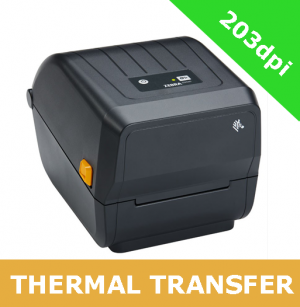

The first is the Printer Ribbon: This ribbon comes in YMCK (Yellow, Magenta, Cyan and Black Resin) format and is used to print all of the images on your card by mixing these colors in a Dye Sublimation process. Retransfer printers have two consumable components: This reduction in wear increases the life of the print head, and decreases the need to pay for replacement parts. The film that the print head comes into contact with is a standard thickness, removing the need for the print head to have to move to accommodate thickness variations in the cards.

Compared to many of its Direct to Card competitors, Retransfer technology offers a higher per minute print volume.Variations in the surface of the card are no longer an issue. With Retransfer Printing, the image is printed on the reverse side of a clear film, which is laminated to the card. Card handling errors can also contaminate the surface, providing a less than perfect surface. Direct to Card process requires an absolutely flat print surface in order to achieve high quality images. Firstly, there is an increased yield, especially with cards used for access control.With Retransfer printing, cost savings will be realised in several different ways.

Custom secure holographic overlays are also available. Additional overlays adhered to bonding film improve security, as well as increase durability. This film is then laminated onto the card surface. The printer prints the image using dye sublimation onto a Retransfer film. Retransfer technology creates a long lasting card, especially ideal for Smart Card personalization.
#Card thermal printer fades full
Vivid colour, photographic detail and full “over the edge printing” brings the card design to life. Printers such as those found with Javelin, Datacard and Fargo offers superior quality imaging and higher level security.Īmong the many benefits of this process is the look of the card itself. Retransfer Printing is one of the latest trends in PVC Card Printing. While there are various methods that can be used for card printing, two of the most common processes are Retransfer and Direct to Card Printing. The technology found in digital card printing offers not only a high quality image and increased security, but a significant cut in the amount of labour and effort required to produce a necessary document. Plastic cards can be printed in monochrome or full colour, front side only or on both sides.Ĭompared to the traditional method of producing cards, which requires a multi-step photo capture, data print then lamination of paper stock, digital card printing offers a different take on card printing. These cards are usually the same size as a standard credit card and made of a plastic called Poly Vinyl Chloride otherwise known as PVC. For this reason, we have provided the following introduction to card printing, explaining the basics of the standard technologies available.ĭigital card printing, is a one step process in which text, graphics and pictures are physically printed on a card directly from a computer system without any user intervention. Understanding the basics of Plastic Card printing can make you a more informed consumer.


 0 kommentar(er)
0 kommentar(er)
